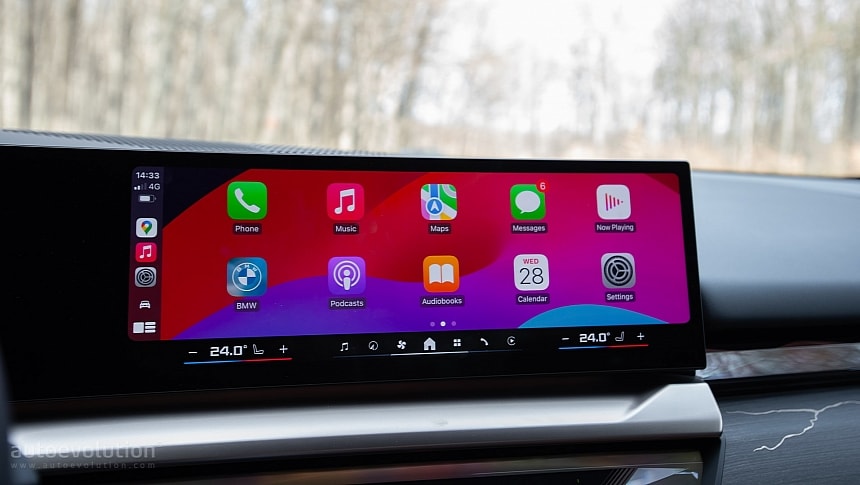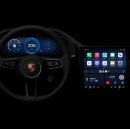The United States Department of Justice has recently filed an antitrust lawsuit against Apple for all the reasons you hate the iPhone maker, claiming the company has built a monopoly around its mobile ecosystem.
Apple's anticompetitive behavior, the DoJ says, comes down to several products, including not only the iPhone but also other products like CarPlay.
The US officials have filed an 88-page complaint against the Cupertino-based tech giant, dedicating at least a chapter to how Apple harms consumers and competitors with its CarPlay strategy.
The DoJ claims CarPlay uses the same so-called "playbook of restrictions," which allows the technology giant to "prevent the development of other disintermediating technologies that interoperate with the phone but reside off the device." The document goes on to explain that the upcoming CarPlay overhaul, which will debut later this year, uses almost all technology in the car, including screens, sensors, and gauges.
Apple wanted to "force users to experience driving as an iPhone-centric experience if they want to use any of the features provided by CarPlay."
The US DoJ seems confused about how CarPlay works.
While CarPlay does require an iPhone to work, mainly because it's a mobile phone projection system, with the smartphone in charge of projecting the interface to the larger screen on the dashboard, Apple isn't the one forcing users to use its system. If someone does it, it's the carmaker offering CarPlay, as each car manufacturer is free to choose whether to support Apple's system.
Most vehicles fitted with CarPlay also support Android Auto, and the driver can always choose between the two. You don't need an iPhone to use phone projection in a car. You can always switch to Android and use Android Auto for a similar experience, especially as Android Auto is very close to CarPlay from a feature perspective.
The new CarPlay also won't enforce the experience on all screens in the car. The system does support all displays, including the instrument cluster, but the carmaker can decide where to let CarPlay run. If they don't want CarPlay to be available in the instrument cluster, they can restrict the experience to the center console.
Consumers can always choose what they want to use in their car, and the choice between Android Auto and CarPlay comes down to what mobile platform they are committed to. Furthermore, if someone doesn't want to use a mobile phone projection system like Android Auto and CarPlay, they can always stick with the infotainment experience bundled with the car. Most carmakers also offer Bluetooth connectivity options, integrated navigation, and even apps to upgrade the infotainment experience, so the chances are that some consumers might like the default features more than Android Auto and CarPlay. However, Apple barely forces anyone to use CarPlay.
The US officials have filed an 88-page complaint against the Cupertino-based tech giant, dedicating at least a chapter to how Apple harms consumers and competitors with its CarPlay strategy.
The DoJ claims CarPlay uses the same so-called "playbook of restrictions," which allows the technology giant to "prevent the development of other disintermediating technologies that interoperate with the phone but reside off the device." The document goes on to explain that the upcoming CarPlay overhaul, which will debut later this year, uses almost all technology in the car, including screens, sensors, and gauges.
Apple wanted to "force users to experience driving as an iPhone-centric experience if they want to use any of the features provided by CarPlay."
The US DoJ seems confused about how CarPlay works.
While CarPlay does require an iPhone to work, mainly because it's a mobile phone projection system, with the smartphone in charge of projecting the interface to the larger screen on the dashboard, Apple isn't the one forcing users to use its system. If someone does it, it's the carmaker offering CarPlay, as each car manufacturer is free to choose whether to support Apple's system.
Most vehicles fitted with CarPlay also support Android Auto, and the driver can always choose between the two. You don't need an iPhone to use phone projection in a car. You can always switch to Android and use Android Auto for a similar experience, especially as Android Auto is very close to CarPlay from a feature perspective.
The new CarPlay also won't enforce the experience on all screens in the car. The system does support all displays, including the instrument cluster, but the carmaker can decide where to let CarPlay run. If they don't want CarPlay to be available in the instrument cluster, they can restrict the experience to the center console.
Consumers can always choose what they want to use in their car, and the choice between Android Auto and CarPlay comes down to what mobile platform they are committed to. Furthermore, if someone doesn't want to use a mobile phone projection system like Android Auto and CarPlay, they can always stick with the infotainment experience bundled with the car. Most carmakers also offer Bluetooth connectivity options, integrated navigation, and even apps to upgrade the infotainment experience, so the chances are that some consumers might like the default features more than Android Auto and CarPlay. However, Apple barely forces anyone to use CarPlay.










